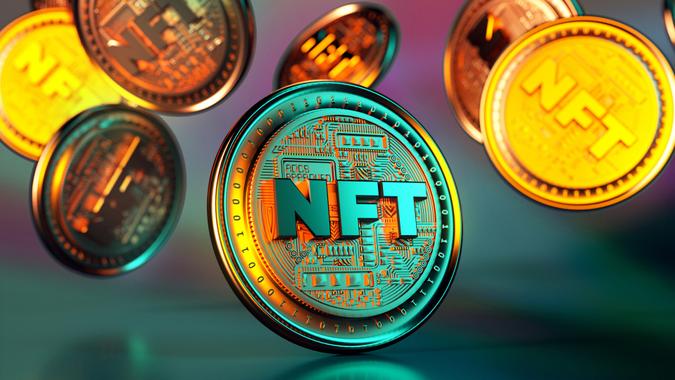NFT vs. Crypto: What’s the difference?

Adrian Vidal / Getty Images / iStockphoto
If you meet someone who trades in non-fungible tokens, chances are that person is also trading crypto. Both crypto and NFT are based on the same software and technology, both entered the public consciousness at about the same time, and both represent an alternative class of investments that are risky, exciting and dominated by young buyers, sellers and traders.
Find: 8 remote jobs that pay at least $ 20 per hour
Uber Lost and Found Index 2022: The strangest (and most common) things people leave behind
Nevertheless, non-fungible tokens are not a type of cryptocurrency, even when the crypto is considered a token instead of a coin. Although they have a lot in common, crypto and NFTs are worlds apart.
Here’s what you need to know.
First the similarities
Cryptocurrencies and NFTs are not the same thing, but mainstream investors can be forgiven for mixing the two.
Both are digital assets; and while crypto came first, the general public began to hear about both at about the same time in the late 2010s. According to Forbes, NFTs are often bought and sold with crypto, and both tend to attract the same players – the NFT world is delimited from the cryptocurrency culture. Both are built with the same programming and coded with the same underlying software, and both are secured in digital wallets – but that’s where the similarities end.
Discover: 6 alternative investments to consider for diversification in 2022
The ABCs of Crypto
Cryptocurrencies such as Bitcoin are decentralized and encrypted digital payment systems that are not issued by banks or supported by a central government such as a government. There are more than 19,000 of them, according to Forbes.
The value of traditional currency is based on trust – trust in the bank, trust in the government, trust in FDIC insurance. The value of crypto, on the other hand, comes from cryptographic evidence of transactions that are verified and registered on a special type of database called a blockchain.
Some people use cryptocurrencies in the same way they use dollars – as a means of exchange to buy things or receive payment for a service or product. However, most people invest in cryptocurrencies as they would store them – as a commodity or security that they hope will increase in value over time.
However, crypto is much more volatile than stocks. They can gain or lose hundreds, thousands and even tens of thousands of percentage points in a short period of time.
What happens to NFTs?
NFTs are digital tokens that represent ownership of unique objects such as photos, music and video clips. You can copy a digital image an infinite number of times, just as you can a Picasso; but with both NFTs and oil paintings, all the value remains with the irreplaceable original.
NFTs are digital files that can represent ownership of anything – for example, Twitter founder Jack Dorsey sold an NFT of his first tweet for more than $ 2.9 million.
They are characterized by the same type of blockchain technology that cryptocurrency made known. They are usually held on the Ethereum platform, although they can also be found on other blockchains, according to Forbes.
Like crypto, blockchain technology makes it impossible for more than one person to own an NFT at one time, making it easy to verify ownership and transfer tokens from one owner to the next.
“F” and “NFT”
Cryptocurrencies are fungible, which means they are interchangeable.
If two people each have one Bitcoin, neither party wins or loses anything if they trade, in the same way that they each exchanged a dollar or an ounce of gold.
Each NFT, on the other hand, is unique. NFTs use blockchain technology to validate the authenticity of the unique property. Like baseball cards and beanie babies, NFTs are non-fungible. They are worth whatever anyone is willing to pay for them based on intangible things like desirability.
Collectors spend millions on in-demand ETFs regardless of the thing they represent for the same reason that art collectors spend millions on Picassos whether they like the painting itself or not. It’s all about the status of owning the original.
Fungibility – the ability to trade for each other – is what makes cryptocurrency a reliable means of performing blockchain transactions.
Because each NFT is unique, NFT can never be used as a purchase medium or a reward for blockchain mining.
Related, but different
Both cryptocurrencies and NFTs rely on blockchain transactions to validate their authenticity and register their ownership; in most cases you need crypto to buy NFTs.
The big difference is that the value of cryptocurrency is purely economic – the value comes from its usefulness as a currency or investment. NFTs, on the other hand, have both economic and non-economic value. For example, artists can use NFTs to distribute, monetize, and even autograph their work — work that an investor or collector can purchase using cryptocurrency.
More from GOBankingRates



